The Green Colosseum by Emmet FitzGerald
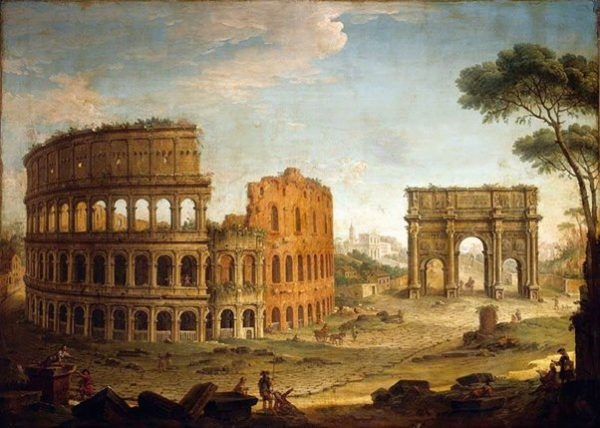
The Roman Colosseum is one of the most-visited and famous ruins in the world, and mostly people know it as a reddish-brown building, but that wasn’t always the case. The Colosseum used to be green.
Paul Cooper is a novelist and PhD researcher at the University of East Anglia studying the history of ruins. He says that the for much of its afterlife, the Colosseum was covered in plants. There were trees, vines, and shrubs growing all over the ruin. The shape of the structure created an array of micro-climates (some damp and cool, others dry and hot) that could support different kinds of plant-life. The image of this overgrown garden inspired many artists and poets on their visits to Rome. Even Charles Dickens wrote about the “walls and arches overrun with green.”
In the 1850s a British botanist named Richard Deakin decided to a botanical survey of the building, cataloging all of the plants growing on the ruin. He found over 400 different species, many of which were so rare they occurred no where else in Europe. Deakin sat down and tried to figure out how that could be.
He came up with a remarkable hypothesis — that the seeds of these rare plants had traveled to Rome on the fur and in the stomachs of exotic animals like lions and giraffes that the Romans had brought into the arena to fight.
Although this theory is impossible to verify, Cooper thinks there’s something poetic about it. Ritual animal hunts were meant to demonstrate human mastery of nature, but they may have inadvertently given rise to a botanical takeover.
The green Colosseum didn’t last forever. In 1870, Italy was unified under a secular democratic government, which took control of the city of Rome from the papacy. This new government wanted to usher in a rational, scientific modern Italian identity rooted in ancient Roman history. They wanted to showcase this magnificent Roman ruin, and they saw all the plants as destructive invaders. Some botanists pushed back and tried preserve this unique ecosystem, but, in the end, most of the plants were cleared from the structure.

Paul Cooper says that when he sees all these beautiful paintings of the Colosseum looking like this lush garden of rare plants, he feels a sense of loss. The vines and the trees tell an important piece of building’s story and raise important questions about which aspects of a ruin we choose to preserve, and what gets cleared away.
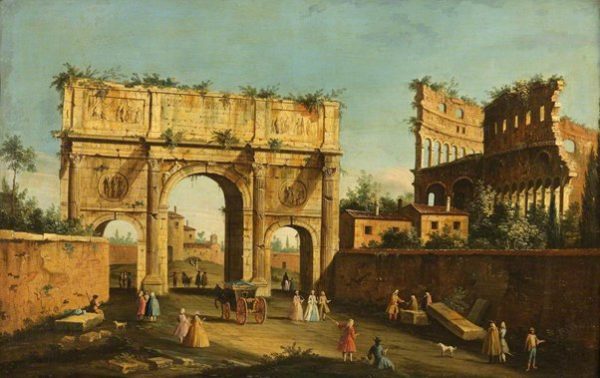
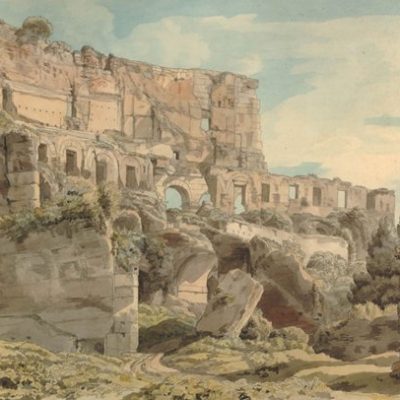

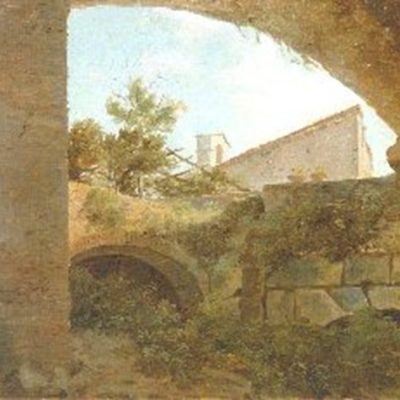
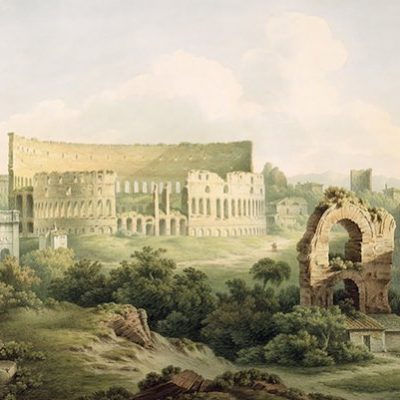
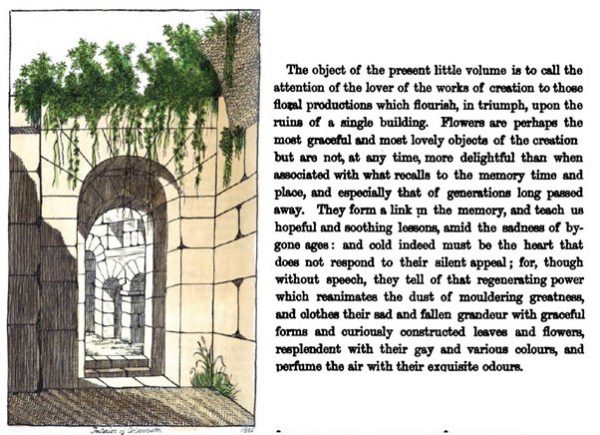
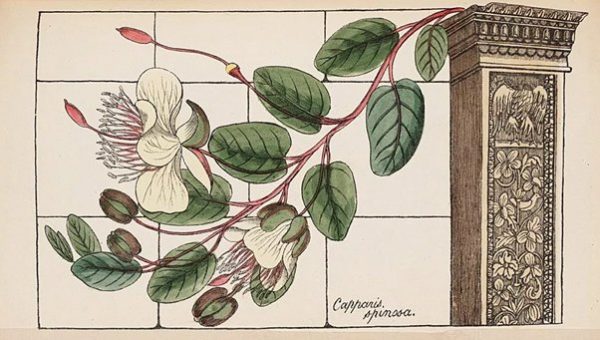
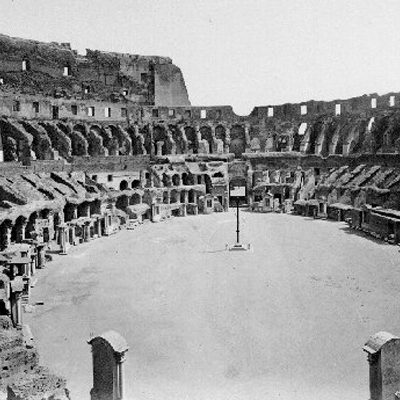
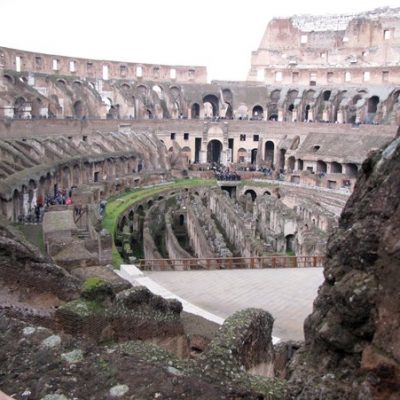
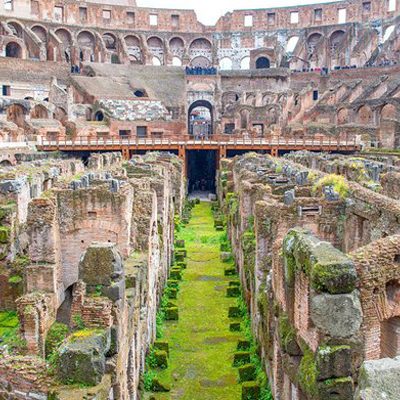




Comments (13)
Share
My favorite image of the flour sack prints is from Life Magazine. In the image there is a pile of Sunbonnet Sue flour sacks in assorted prints, but the worker is filling one with a stuffed bunny sewing pattern on it. I like to think that even in times of scarcity and rationing that someone’s little girl, who came with her mother to the general store pleaded for that flour sack like my little girl asks for stuffed animals… well everywhere. I hope she got it.
Ice wasn’t the only material they experimented with for shipbuilding in WWII. Look up the concrete ships. There’s the wreck of one just off a beach in NJ.
The story of the Stroh violin was fascinating especially as it has a strange connection for me. I am from Northern Ireland and in the capital city, Belfast, there is a well known Romanian busker that uses what I now know to be a Romanian horn violin. This morning I was talking to my work colleagues about the busker, wondering what the strange instrument was. A couple of hours later I listened to this podcast and to my amazement, I could not believe that this podcast contained the answer to our earlier conversation and that the instrument was one of the subjects in the podcast! I just cant believe it, what are the chances!
I’m a big fan of the show and never miss a podcast, I particularly like these mini stories episodes, especially when you come up with fascinating and interconnected stories like this!
I wish the web article had more about the city flag redesigns.
Yes, I came to the site for the same reason, hoping to see the old and new flags!
Might want to check this out! https://99percentinvisible.org/article/vexillology-revisited-fixing-worst-civic-flag-designs-america/
I once found a portal into an interdimensional vomitorium when visiting Pocatello. I saw some unexplainable entities there who were really into eating pawpaws.
Best episode all season
Hey, I love the Habbakuk story, although I wonder if your piece on it was summarized from a CBC Radio story of a few years ago? It would be nice to at least provide a link to that much longer radio doc, which goes into a lot more detail on the work of Geoffrey Pyke:
http://www.cbc.ca/radio/ideas/iceberg-ship-habbakuk-1.2914235
Myth-Busters also did an episode on pyke-crete:
https://www.youtube.com/watch?v=UMKis4FPykw
Great story!!! Funny fact I round researching this story: the man who patented the idea was named ‘Bales’. :) There are some really good books about this, including one called ‘Feedsack Secrets’. Question: is anything known about the designers of the patterns?
The admiral who came up with the ship idea was named Mountbatten. Was he in any way related to Prince Philip? I was just wondering. Thanks!
Sheila… yes, as an Englishwoman, I was somewhat irritated by “some guy called”. How would an American like it if I said “some guy called Sherman”?
https://en.wikipedia.org/wiki/Louis_Mountbatten,_1st_Earl_Mountbatten_of_Burma
More cheerfully, I saw a horn violin on stage at the Royal Shakespeare Theatre, Stratford last year. Sadly, I can’t work out how to put a picture on here.
I was (even as an American) a bit vexed when a member of Prince Phillip’s family and mentor to Prince Charles was only described as this one admiral. There was even the loss of an additional mini story in the deal. Mountbatten was a design choice to Anglicize a Germanic name (maybe a bit of a stretch), the name was chosen to obfuscate the family’s German heritage during WWI by translating the parts of the name separately and smashing them back together.